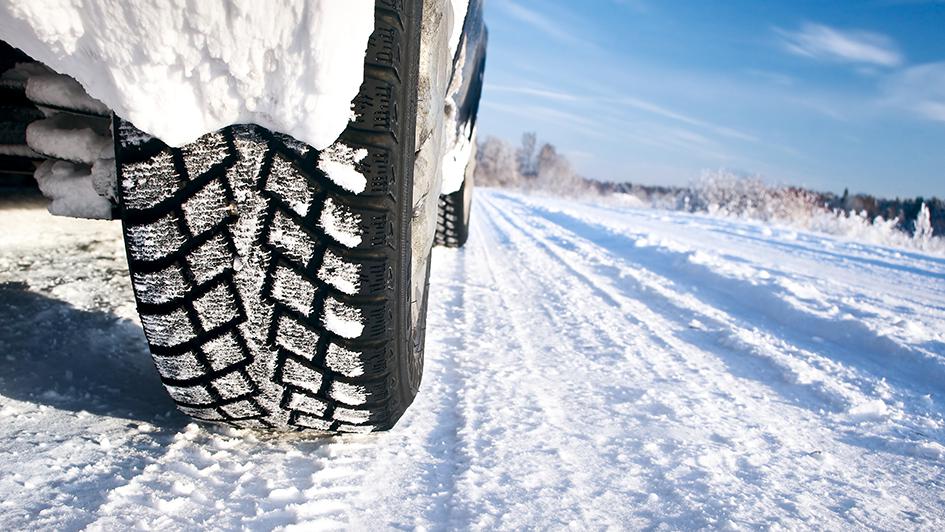Road safety is influenced by many factors. It is important not only to comply with the driving rules, but also to keep the car in a technically sound condition. Due to severe climatic conditions in many regions of our country, drivers have to change tires. At the same time, motorists have a lot of questions about the need to perform such actions, they care about whether there is a penalty for the lack of winter tires. It is worth mentioning right away that it is forbidden to drive in summer tires in winter, as well as to use studded wheels in summer.
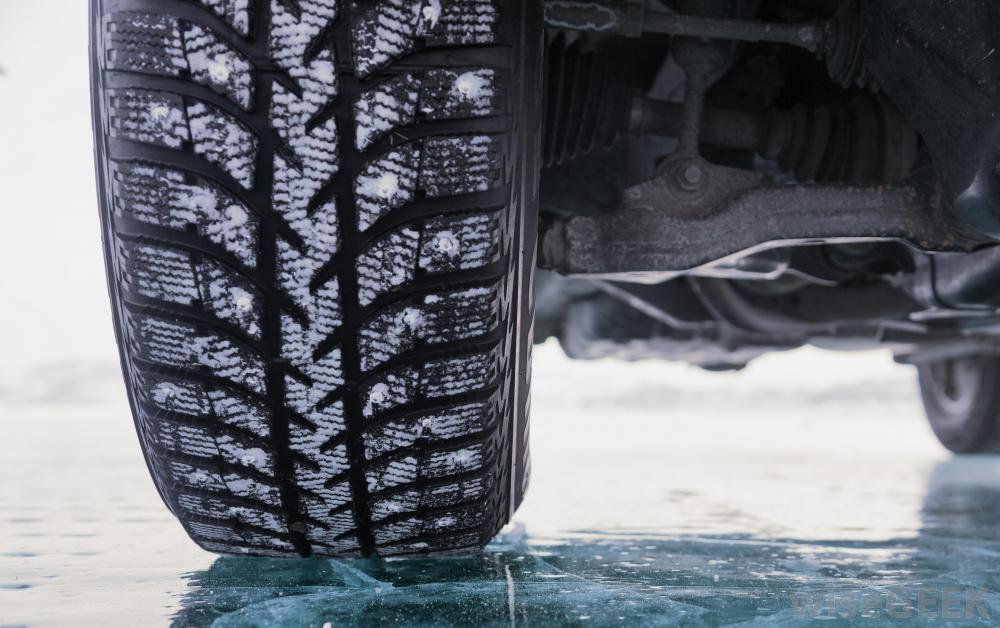
What the law says
To understand whether a traffic police officer is rightfully fined for the lack of winter tires, you need to familiarize yourself with the regulations of the Customs Union. It, in particular, clearly stipulates which months of the year relate to the winter and which to the summer. The first always include December, January and February. Summer is June, July and August, respectively. However, a single region has the right to establish its own restrictions, and only in the direction of increasing the number of winter months. This situation is quite logical, because, for example, in the Krasnoyarsk Territory, snow on the streets is much longer than in the same Rostov Region.
The law clearly states that it is forbidden to operate a car that is not equipped with winter tires from December to February. Moreover, winter tires should be installed on all wheels of the car. But the exact timing of the "re-shoe" of the vehicle can be set by regions.
Exact dates
Before you find out if a penalty is provided for the lack of winter tires, you need to know exactly when the ban on the use of summer wheels in a particular region applies. For 2018, no region has yet changed the rules that are established in the Technical Regulations. If the changes are adopted, then their existence can be found in regional legislative acts or from local government decrees.
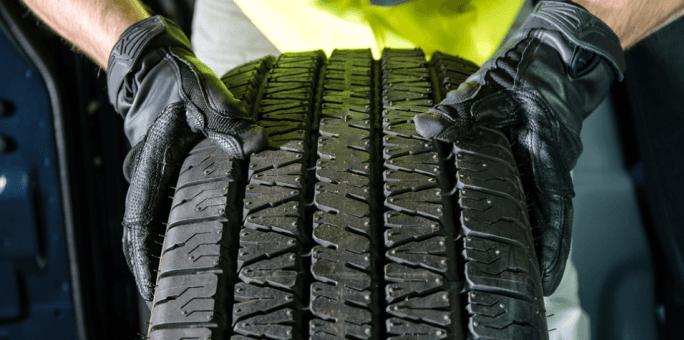
The main provisions of the Technical Regulations
The penalty for the lack of winter tires can be imposed, but not everything is so simple. The law that governs the use of winter tires contains the following information:
- Describes the characteristics of winter tires and gives its concept. But the technical features directly depend on the carrying capacity of the machine and its type.
- A fine for the lack of winter tires in Russia can be imposed by the traffic police only if the wheels do not meet the prescribed characteristics and are not suitable for use in the winter.
- The fine may be replaced by a prescription if there is only a slight inaccuracy in the description of tires.
Many drivers are worried about the question of whether a fine for the lack of winter tires is appropriate if all-season tires are used. In the Technical Regulations, such a concept does not exist. When studying wheels that are used in summer and winter, the technical characteristics of rubber and its marking are taken into account.
Is there a penalty for the lack of winter tires
There is very good news for drivers. A specific penalty for the absence of winter tires in the cold season is not provided. It has not been adopted before and still does not appear in any legislation. Doubters can easily check if there is a penalty for the lack of winter tires in winter.
Only Tehreglmaent regulates driving in summer on summer tires, therefore, regional CAO should refer exclusively to it in order to provide for any punishment.However, the Code can refer to the Technical Regulations only in case of violations of the tinting of the car. Other fines for violation of the regulations are not provided by law.
Thus, it can be unequivocally argued that a traffic police fine for the lack of winter tires will be unlawful. It doesn’t matter when the driver uses such tires. The law does not distinguish neither the autumn months nor the winter.
Some nuances
Despite the fact that there is no penalty for the lack of winter tires, the driver may incur a certain penalty for inadequate vehicle equipment. In this case, traffic rules come into play. They provide a certain list of malfunctions in which it is forbidden to operate the car.
Speaking about the penalty for the lack of winter tires, we repeat that it is not there, but the driver can be punished and will be required to pay an amount of 500 rubles if the remaining tread depth does not meet the standards specified in the rules of the road. All drivers know that the performance of summer and winter tires in this case is very different.
The remaining tread depth is clearly indicated for each vehicle. So, a fine for the lack of winter tires, the size of 500 rubles, can be imposed if the characteristics of the tires do not correspond to the following data:
- for cars of category L - 0.8 mm;
- for machines of category N2 and N3 - 1 mm;
- for vehicles of category N1 and M1 - 1.6 mm;
- for vehicles M2 and M3 - 2 mm.
Tread Requirements
What is the penalty for the lack of winter tires, how much you have to pay, many drivers are worried. Despite the fact that the law does not provide for punishment for driving in the cold season on summer tires, the owner of the vehicle may be fined. The traffic police officer can check the residual tread depth and, if it does not meet certain requirements, the recovery amount will be 500 rubles.
The wheel requirements set out in the rules of the road are as follows:
- On icy roads and snowy surfaces, tires that are marked may be used.
- The icon is a snowy peak with three peaks. Inside it are depicted snowflakes.
- Must be present signs: M + S; M&S; M S.
- Signs of wear are excluded.
- The remaining tire depth should be no more than 4 mm.
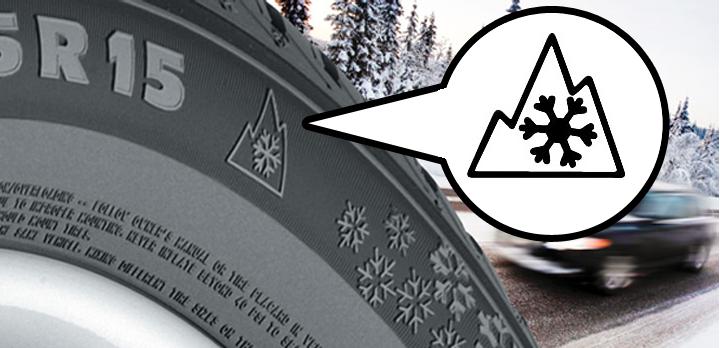
When to change tires
Having figured out what a penalty for the lack of winter tires in winter can be provided, and how legitimate it is, it is important to understand when to “change shoes” a car. The law, as amended, reads as follows:
- In summer, it is forbidden to use wheels with anti-skid spikes.
- In winter, it is forbidden to operate a vehicle that is not equipped with wheels that fully comply with the accepted standards specified in the rules of the road.
- According to the Regulations, the car must be "shod" in winter tires from December 1 to March 1. Accordingly, summer wheels must be used from June to August. Regions have the right to shift norms, taking into account climatic conditions. So, in Moscow it is necessary to put cars in winter tires from November 1.
The amendments are important because in some regions studded tires may not be necessary at all. In other areas, winter wheels can be used almost year-round.

Use all-season
The use of "all season" is not limited by law. The fine only for its use, as well as summer tires, is not imposed in winter. However, a punishment can still follow, because the tread depth may not correspond to technical standards.
All-weather tires are almost never marked with a mountain peak and snowflakes. However, the inscription M + S may be present.Therefore, when checking the legality of using such wheels, a norm is used that states that the depth must be at least 4 mm and one of the icons ("mountain peak" or letters) must be present.
Spikes sign
If a motorist in winter uses rubber with spikes, then a special badge with the letter "W" must be glued. The sticker should be placed on the rear window of the car.
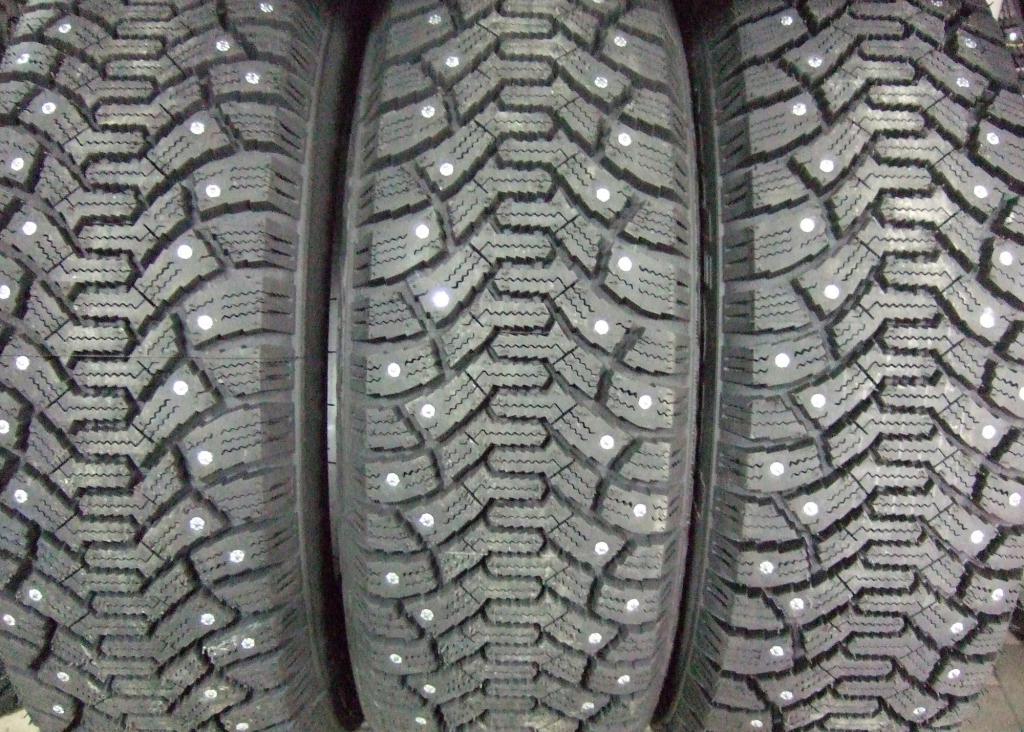
What to look for
In order not to get into trouble, it is necessary to clearly know what requirements are imposed on winter tires and what to look for before operating the machine. In addition to the corresponding badges and markings, there are additional characteristics that tires must meet:
- The absence of visible damage and violations of rubber. Such factors as layering of the coating, obvious breaks, separation of layers along the lateral parts, breakdowns and cuts can serve as a prohibition on driving and prescribing tire replacement.
- With full compliance of the wheels with the requirements, cracks in the disks are unacceptable.
- All mounting parts on the discs must be in place (bolts and nuts).
- The same wheels should be installed on the same axle. The use of tires with a different pattern, the degree of wear, distinguishing by type and model can lead to a fine.
- The motorist must equip the entire vehicle with winter tires. The presence of at least one wheel that does not meet the requirements of the SDA is equivalent to the complete absence of the necessary tires.
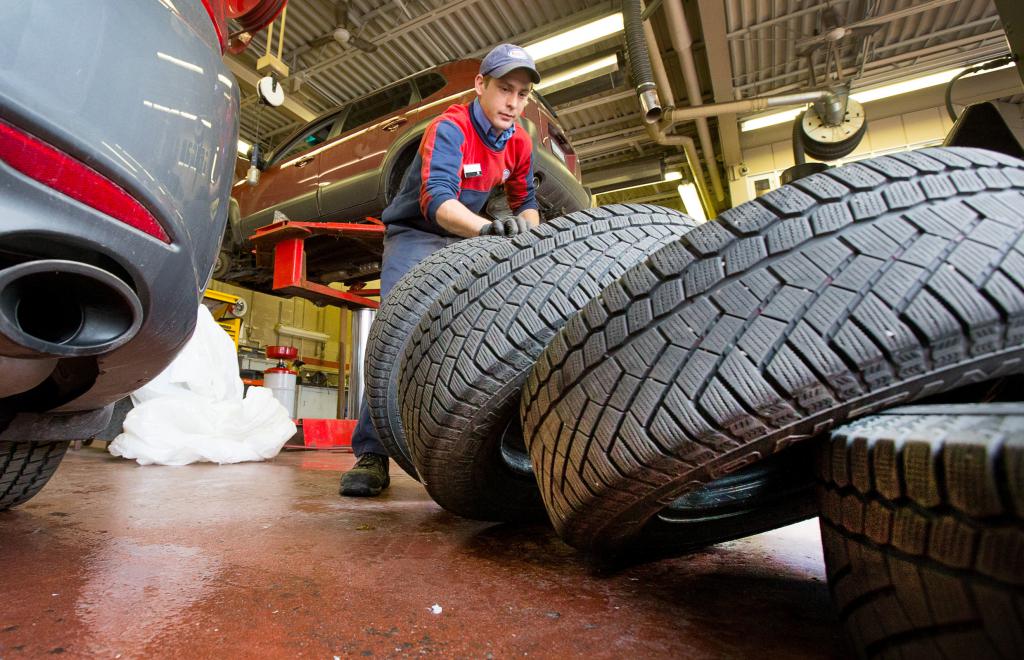
Why you can’t drive summer tires in winter
The operation of summer tires in winter conditions is dangerous both for the motorist and for other road users. Roads in winter can have ice, become covered with a thick layer of snow, and just asphalt changes its characteristics, due to the cold temperature. Why it is forbidden to use summer tires in the cold season:
- the braking distance is significantly increased, because the rubber is not suitable for riding on snow and ice:
- traction is reduced, therefore, the maneuverability of the vehicle is reduced:
- tires wear out quickly because the rubber is not designed to be exposed to sharp ice and cold snow.
Of course, the responsibility for tire wear lies with the vehicle owner. As they become damaged, it is necessary to replace the old wheels with new ones. But if their technical characteristics do not meet the standards adopted for the corresponding seasons, then a fine may be imposed on the driver.
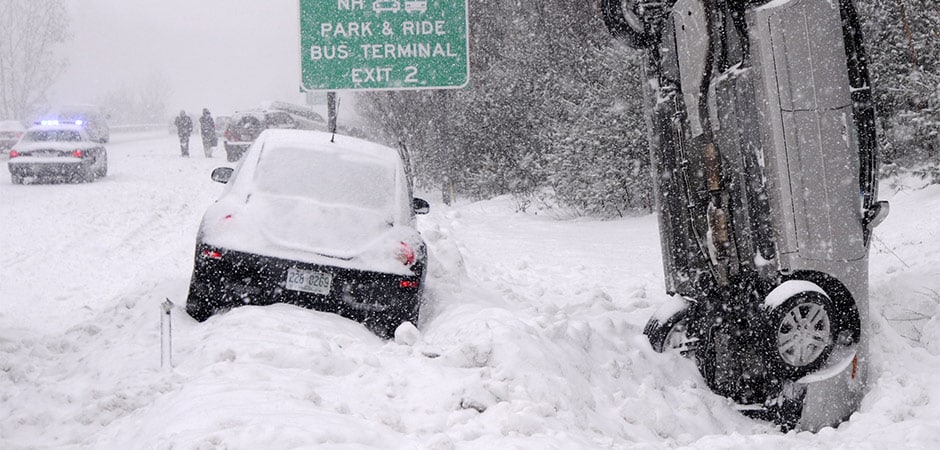
Some difficulties
The rules of the road clearly indicate the technical characteristics that winter tires should have. However, strict liability for their violation is still not provided. The climatic features of some regions of the country are legally taken into account and the use of winter tires is allowed even in the summer months.
In Russia, it is difficult to introduce uniform requirements that would apply in all regions. This is the lack of existing amendments. Therefore, there is no law on fines for the use of summer or winter tires at inappropriate times of the year. There is also no punishment for the lack of a badge "W" in the presence of wheels with spikes. However, the traffic police may issue an order to eliminate violations.
Legislators are developing this issue, but have not yet come to a consensus. It is assumed that the car owner will be deprived of the right to pay insurance for compulsory motor third-party liability insurance in the event of a traffic accident. While on the road they can check the compliance of the tire quality with the standards that are indicated in the rules of the road. And precisely for these violations, a fine of 500 rubles may be imposed on the driver. It is assumed that in the future the amount of the penalty will be increased, because some drivers are not afraid of such a punishment and they continue to use summer tires in winter. At the same time endangering himself and other participants in the movement.
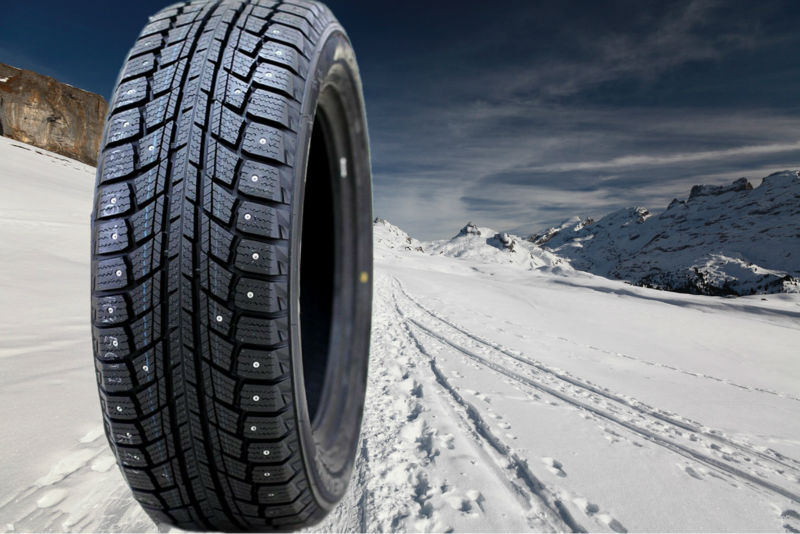
findings
All motorists are interested in the question of what the penalty for the absence of winter tires is prescribed by law. Despite the fact that officially there is no punishment for driving on summer wheels in the cold season, the motorist can still receive a receipt for payment of the violation.
A fine of 500 rubles is imposed on the owner of the vehicle if the wheels do not meet all the requirements listed in the traffic rules. Even if for some the amount seems insignificant, you should not neglect the safety of yourself and other road users. Only the presence of special tires guarantees a tight grip on the road surface, on which there is ice or snow.
